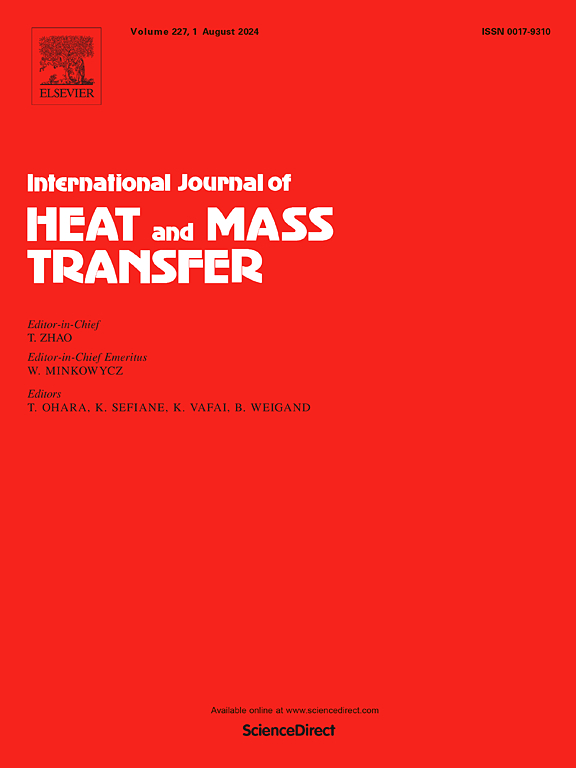Effect of zirconium fuel cladding oxidation on water boiling in PWR: A molecular dynamics study
IF 5
2区 工程技术
Q1 ENGINEERING, MECHANICAL
International Journal of Heat and Mass Transfer
Pub Date : 2025-04-27
DOI:10.1016/j.ijheatmasstransfer.2025.127155
引用次数: 0
Abstract
Clarifying the mechanism of water boiling on the zirconium fuel cladding in the pressurized water reactor (PWR) is crucial for the safety and design of reactors. The underlying mechanism remains largely unclear so far. In this study, the molecular dynamics method is employed to investigate the boiling behavior of water on zirconium (Zr) surfaces with varying degrees of oxidation (pure Zr, perfect zirconia ZrO2, and zirconium reconstructed through oxidation reaction Zr-O). The phase change behavior of water, the accompanying heat transfer characteristics at the solid-liquid interface, and the energy distribution on different surfaces are analyzed under two heating temperatures of 600 K and 650 K. The results indicate that the oxidation of Zr significantly influences the phase change behavior of water. Compared to Zr, the non-uniform distribution of oxygen atoms on the Zr-O surface increases the thermal resistance of both the solid conductive layer and the solid-liquid interface, whereas the ordered arrangement of oxygen atoms in ZrO2 solid enhances heat transfer at the solid-liquid interface. The efficient heat transfer at the solid-liquid interface on ZrO2 allows water molecules to gain greater kinetic energy to overcome the potential energy barrier for explosive boiling. This study provides a theoretical foundation for understanding the effect of oxide deposition of Zr cladding on water boiling in PWR.
锆燃料包壳氧化对压水堆水沸腾影响的分子动力学研究
弄清压水堆锆燃料包壳上水沸腾的机理,对反应堆的安全和设计至关重要。到目前为止,潜在的机制仍不清楚。本研究采用分子动力学方法研究了水在不同氧化程度锆(纯Zr、完美氧化锆ZrO2和氧化反应Zr- o重建的锆)表面的沸腾行为。分析了在600 K和650 K两种加热温度下,水的相变行为、固液界面的传热特性以及不同表面上的能量分布。结果表明,Zr的氧化对水的相变行为有显著影响。与Zr相比,Zr- o表面氧原子的不均匀分布增加了固体导电层和固液界面的热阻,而ZrO2固体中氧原子的有序排列增强了固液界面的传热。ZrO2在固液界面的高效换热使水分子获得更大的动能,克服爆炸沸腾的势能障碍。该研究为理解Zr包层氧化沉积对压水堆沸水的影响提供了理论基础。
本文章由计算机程序翻译,如有差异,请以英文原文为准。
求助全文
约1分钟内获得全文
求助全文
来源期刊
CiteScore
10.30
自引率
13.50%
发文量
1319
审稿时长
41 days
期刊介绍:
International Journal of Heat and Mass Transfer is the vehicle for the exchange of basic ideas in heat and mass transfer between research workers and engineers throughout the world. It focuses on both analytical and experimental research, with an emphasis on contributions which increase the basic understanding of transfer processes and their application to engineering problems.
Topics include:
-New methods of measuring and/or correlating transport-property data
-Energy engineering
-Environmental applications of heat and/or mass transfer

 求助内容:
求助内容: 应助结果提醒方式:
应助结果提醒方式:


